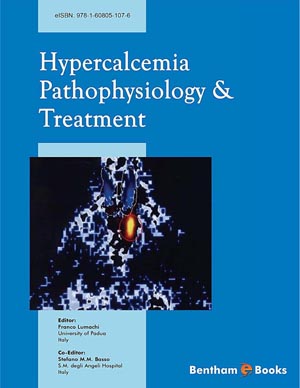Abstract
Hypercalcemia, defined as serum total calcium “adjusted” for the serum albumin concentration above the upper limit of the population reference interval, can develop either in a context of a known disease (renal failure, malignancy, or endocrine diseases) or an unexpected result in a routine biochemical testing. The first step is confirming that it is “true” hypercalcemia, excluding pre-analytical, biological, and analytical interferences. A serum calcium value >2.65-2.70 mmol/L (10.8 mg/dL) is very unlikely to be due to analytic variations. However, only ionized calcium correctly assesses the calcium balance and should be the test of choice. In the diagnostic algorithm, which requires assessment of renal function by serum creatinine or estimated glomerular fraction rate, the key step is the determination of intact parathyroid hormone (PTH), together with 25-hydroxyvitamin D [25(OH)]D, for differential diagnosis between PTH-mediated and non-PTHmediated hypercalcemia. In primary hyperparathyroidism, laboratory findings related to calcium balance and renal function, together with bone mineral density, are important guideline elements in patients with symptomatic primary HPT. In those undergoing parathyroidectomy, the intraoperative measurement of PTH by a quick assay may predict operative outcome. In familial hyperparathyroidism, genetic sequencing can provide useful information and it is necessary for a definitive diagnosis, and adequate management of relatives. In severe malignancy-associated hypercalcemia, calcium-phosphate balance and renal function tests are useful for monitoring the course of disease, and the effects of medical therapy. In differential diagnosis with granulomatous disorders, 25(OH)D measurement is suggested, while PTH-related protein assay is not recommended as a routine test.






















